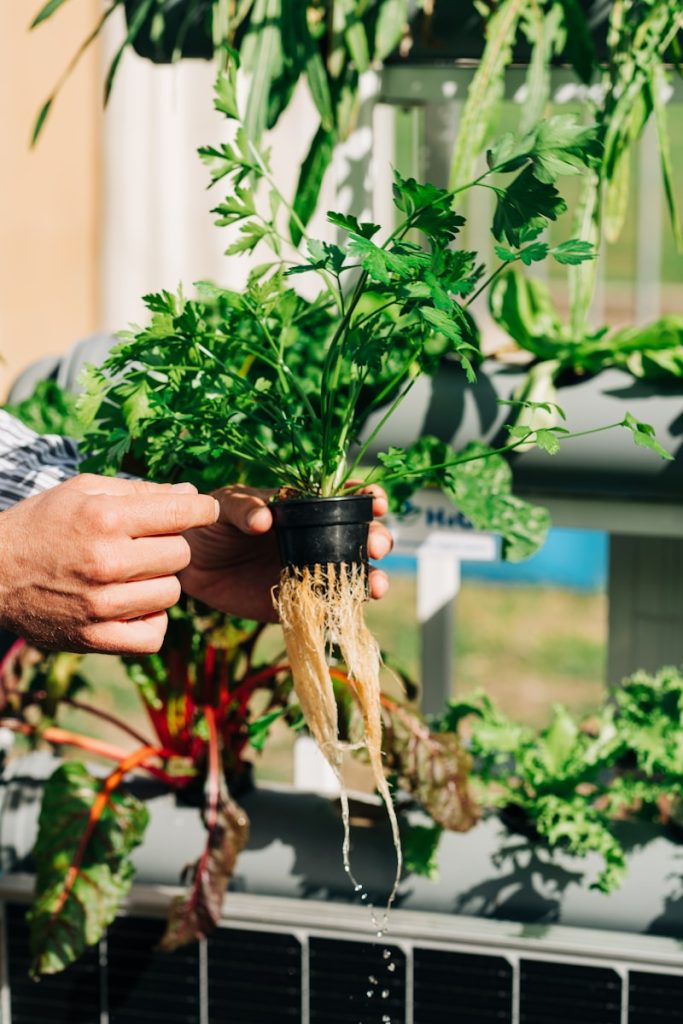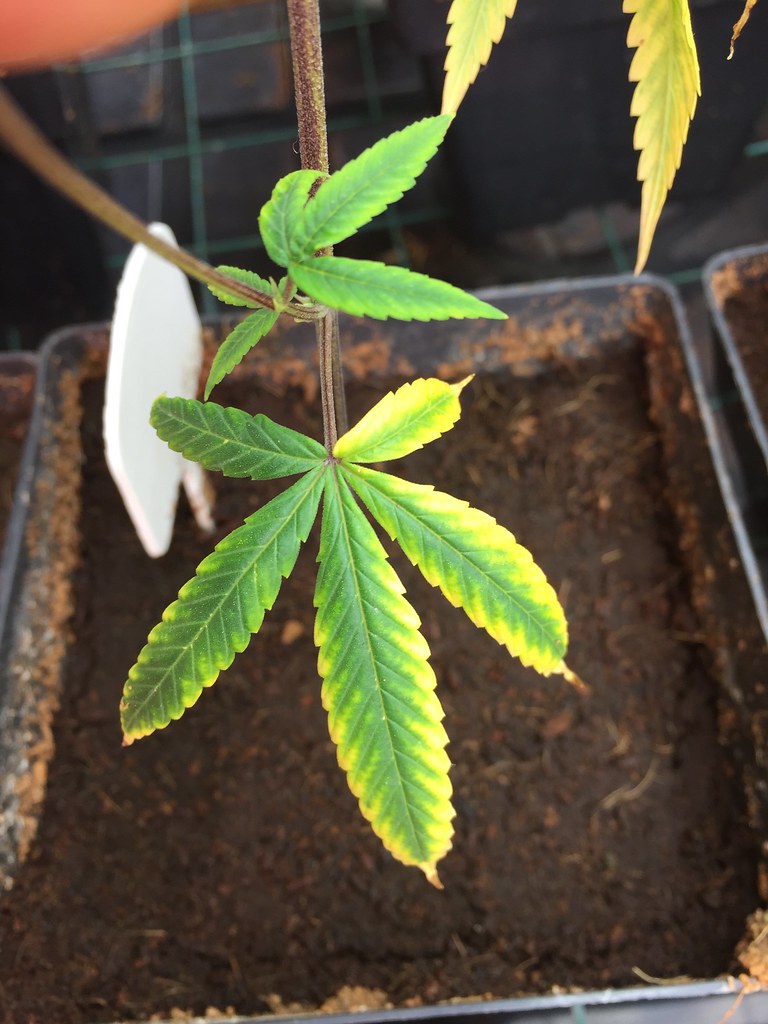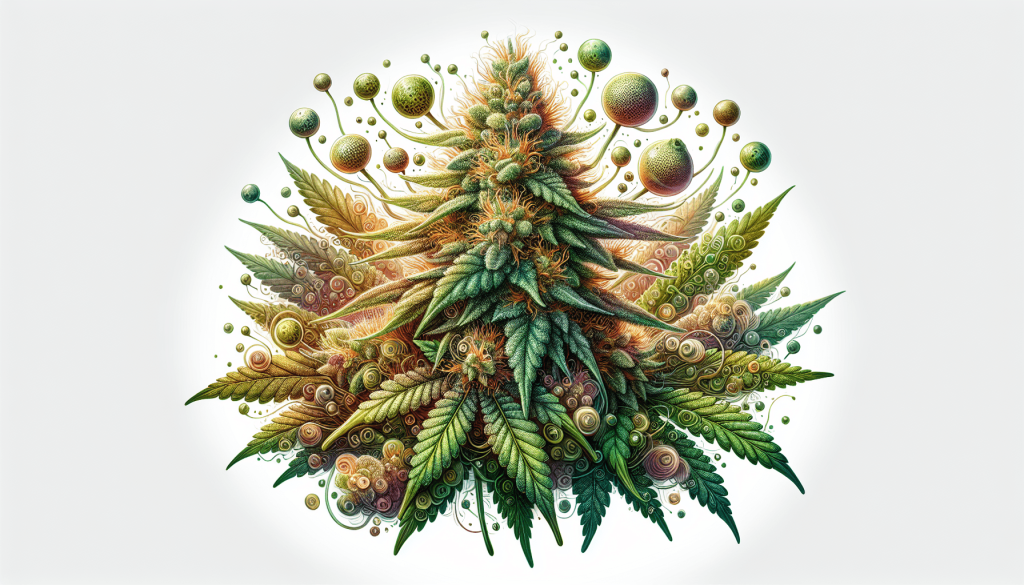Are you curious about cultivating cannabis? You’ve come to the right place! This article will demystify the scientific jargon and technical terms related to cannabis cultivation and science. Whether you’re a beginner or an experienced grower, understanding the nuances of cannabis terminology is essential. We’ll cover everything from terpenes to cannabinoids, providing you with the knowledge to confidently navigate the world of cannabis cultivation. Prepare to expand your vocabulary and deepen your understanding of this fascinating plant!
Understanding the Basics of Cannabis
What is Cannabis?
Cannabis, also known as marijuana, is a flowering plant that produces psychoactive compounds called cannabinoids, such as THC (tetrahydrocannabinol) and CBD (cannabidiol). These compounds interact with the human body to produce various effects. Cannabis has been used for medicinal, recreational, and industrial purposes. Notably, industrial hemp, a variety of cannabis, is utilized for producing textiles, paper, and other materials.
The History and Cultural Significance of Cannabis
Cannabis has been used for thousands of years. Ancient civilizations in China, India, and Egypt cultivated and consumed cannabis for medicinal, spiritual, and recreational purposes. For instance, in ancient China around 2737 BCE, cannabis was used as medicine. In India, it was part of religious rituals. The use of cannabis has spread worldwide over centuries, becoming a subject of global debate and evolving laws.
Cannabis Plant Anatomy and Life Cycle
The cannabis plant is composed of several parts, each serving specific functions. The most sought-after part is the flower or bud, which contains the highest concentration of cannabinoids. The plant also includes leaves, stems, and roots, contributing to its overall health and growth. The cannabis life cycle starts with seed germination, followed by vegetative growth, and culminates in flowering and seed production. Additionally, cloning and potential hermaphrodite plants can be part of its propagation process.
Cannabis Cultivation Methods
Indoor vs. Outdoor Cultivation
Cannabis can be grown indoors or outdoors, each method offering distinct advantages. Indoor cultivation allows for complete control over environmental factors such as light, temperature, and humidity. This can result in higher yields and quality but comes with higher costs, particularly for electricity and artificial lighting. Outdoor cultivation, on the other hand, benefits from natural sunlight, which can produce larger plants. However, it relies heavily on weather conditions and is more vulnerable to pests.
Hydroponics and Soil-Based Cultivation
Hydroponics involves growing cannabis without soil, using a nutrient-rich water solution. This method often leads to faster plant growth and reduces water usage. Soil-based cultivation, using natural soil and organic matter, provides a more traditional approach. Each method has its benefits, with hydroponics offering precise nutrient control and soil cultivation supporting microbial life beneficial for plant health.

Understanding Light Requirements for Cannabis Growth
Light is crucial for photosynthesis, the process by which plants convert light into energy. Cannabis requires different light spectrums for various growth stages. The blue spectrum supports vegetative growth, while the red spectrum is vital for flowering. Natural sunlight is ideal, but artificial lights such as High-Pressure Sodium (HPS) and Light Emitting Diodes (LEDs) are commonly used for indoor cultivation.
Temperature and Humidity Control in Cannabis Cultivation
Cannabis plants thrive within specific temperature and humidity ranges. During the vegetative stage, ideal temperatures range from 70 to 85 degrees Fahrenheit (21 to 29 degrees Celsius) with relative humidity around 50% to 70%. During the flowering stage, lower temperatures (65 to 80 degrees Fahrenheit or 18 to 26 degrees Celsius) and reduced humidity levels (40% to 50%) are preferred. Proper temperature and humidity control prevent issues like mold, especially during flowering.
Nutrient Management and Fertilizers for Optimal Growth
Cannabis requires a balanced supply of nutrients, including macronutrients like nitrogen (N), phosphorus (P), and potassium (K), along with micronutrients like iron (Fe), zinc (Zn), and manganese (Mn). These nutrients support various aspects of plant development. Fertilizers can be either organic or synthetic, with organic options improving soil health and synthetic fertilizers providing precise nutrient control. Adjusting the nutrient supply according to the plant’s growth stage is crucial for maximizing yields.
The Science of Cannabis Genetics
Cannabis Species and Their Genetic Variations
Cannabis plants belong to the genus Cannabis, with the most common species being Cannabis sativa, Cannabis indica, and Cannabis ruderalis. Each species has unique characteristics. For example, sativa strains are known for their uplifting effects, while Indica strains tend to produce relaxing effects. Ruderalis is less common but is valued for its auto-flowering traits, which allow it to flower based on age rather than the light cycle.
Understanding Cannabis Hybrids and Their Traits
Hybrid cannabis strains are created by crossbreeding different varieties to combine desirable traits. These hybrids can be Indica-dominant, Sativa-dominant, or balanced hybrids, depending on the genetic makeup of the parent strains. Each hybrid offers unique characteristics, such as specific cannabinoid profiles, flavors, or effects. Understanding these traits helps cultivators select the most suitable strains for their goals.
The Role of Terpenes and Cannabinoids in Cannabis Genetics
Terpenes and cannabinoids are the chemical compounds that give cannabis its distinct aroma, flavor, and therapeutic effects. Terpenes like myrcene and limonene contribute to the plant’s scent and may enhance its effects through the entourage effect, where they interact with cannabinoids like THC and CBD. This interaction can amplify the medicinal benefits of the plant, making it crucial for growers to understand these compounds.
Cannabis Reproduction and Propagation
The Male vs. Female Cannabis Plants
Cannabis plants can be male, female, or hermaphrodite. Female plants are preferred for cultivation as they produce buds rich in cannabinoids. Male plants produce pollen necessary for seed production but are usually removed to prevent pollination of female plants, which can lead to seedless buds. Hermaphrodite plants, which have both male and female characteristics, can self-pollinate, typically an undesirable trait for growers.
Natural and Artificial Pollination
Pollination occurs when pollen from male flowers reaches the stigma of female flowers, leading to fertilization and seed production. Natural pollination relies on wind or insects, while artificial pollination involves manually transferring pollen. Controlled breeding usually excludes male plants to produce seedless buds, a desirable trait for most commercial cannabis growers.
Seed Production and Selection
Quality seeds are vital for successful cannabis cultivation. Factors such as genetics, germination rates, and stability are considered when selecting seeds. Feminized seeds, which are bred to produce only female plants, are often preferred for maximizing yield. Seed banks and breeders play a key role in preserving and developing unique genetic traits through careful selection and breeding techniques.
Cloning and Tissue Culture Techniques in Cannabis Propagation
Cloning involves taking cuttings from a mother plant to produce genetically identical offspring, preserving desirable traits like high THC content or disease resistance. Tissue culture is a lab-based method where cannabis cells or small tissue samples are grown in a controlled environment, allowing for the mass production of identical plants. This technique is particularly useful for preserving rare or endangered cannabis strains.
Environmental Factors Influencing Cannabis Growth
The Importance of Temperature and Light Cycles
Temperature and light cycles are critical for cannabis growth. During the vegetative stage, longer light periods (18-24 hours) promote growth, while shorter light cycles (12 hours of light and 12 hours of darkness) during the flowering stage trigger bud production. Proper light management affects the plant’s hormonal balance, crucial for healthy development.
Managing Air Circulation and CO2 Levels in the Grow Room
Adequate air circulation and CO2 levels are essential for healthy cannabis growth. Proper ventilation prevents heat and humidity buildup, reducing the risk of mold. CO2 supplementation, maintaining levels between 1000 and 1500 ppm, can significantly boost photosynthesis and plant growth, leading to higher yields.
Proper Irrigation and Water Quality Considerations
Watering cannabis plants requires careful management to avoid overwatering or underwatering, which can cause root rot or nutrient deficiencies. Water quality, including its pH level, is also important. For hydroponic systems, a pH range of 5.5 to 6.5 is optimal, while slightly acidic water is preferred for soil-based cultivation.
The Impact of pH on Nutrient Availability and Plant Health
pH levels directly impact nutrient availability in the growing medium. Cannabis plants prefer a slightly acidic pH range of 5.8 to 6.5. Deviations from this range can lead to nutrient lockout, where plants cannot absorb essential nutrients, resulting in deficiencies or toxicities. Regular pH monitoring and adjustments help maintain a balanced growing environment.
Understanding Cannabis Nutrients and Feeding
Macronutrients vs. Micronutrients in Cannabis
Macronutrients like nitrogen, phosphorus, and potassium are required in larger quantities to support robust plant growth. Micronutrients, such as iron, zinc, and manganese, are needed in smaller amounts but are equally important for overall plant health. Both types of nutrients are crucial for preventing growth issues and ensuring healthy development.
NPK Ratio and Its Effects on Plant Growth
The NPK ratio refers to the proportions of nitrogen, phosphorus, and potassium in fertilizers. Different stages of cannabis growth require different NPK ratios. For instance, higher nitrogen levels are beneficial during vegetative growth, while increased phosphorus and potassium are essential during the flowering stage to support bud development.
Common Nutrient Deficiencies and Their Symptoms
Nutrient deficiencies can negatively affect cannabis plants, leading to visible symptoms like yellowing leaves (nitrogen deficiency) or purple stems (phosphorus deficiency). Recognizing these symptoms early and adjusting the nutrient supply can help maintain healthy plants and prevent further damage.
Organic vs. Synthetic Fertilizers for Cannabis Cultivation
Organic fertilizers, derived from natural sources, improve soil health and support microbial activity. Synthetic fertilizers offer precise control over nutrient levels, allowing for tailored nutrient solutions. The choice between organic and synthetic fertilizers depends on cultivation goals and personal preferences, with organic methods often favored for sustainability.

The Role of Light in Cannabis Growth and Development
The Different Phases of the Cannabis Light Cycle
Cannabis requires different light cycles for its growth stages. The vegetative stage benefits from longer light periods (18-24 hours), promoting rapid growth. The flowering stage is triggered by shorter light cycles (12 hours light/12 hours dark), which stimulate bud production. Understanding and managing these light cycles is crucial for successful cannabis cultivation.
Understanding the Qualities of Light for Cannabis
Light quality, including its spectrum and intensity, influences cannabis growth. Cannabis requires a balance of blue and red wavelengths for optimal photosynthesis. Different light sources, like HPS and LED lights, can provide the necessary spectrum. LED lights are becoming more popular due to their energy efficiency and customizable light spectrum.
Choosing the Right Grow Lights for Indoor Cultivation
Selecting the right grow lights depends on various factors, including budget, grow space, and desired outcomes. HPS lights are known for their high light output but generate significant heat. LEDs, on the other hand, are energy-efficient and offer customizable light spectrums suitable for different growth stages.
Light Intensity, Duration, and Photoperiod Manipulation
Light intensity, measured in lumens or lux, should be carefully managed to ensure plants receive enough light for photosynthesis. Typically, an intensity of 400-700 micromoles per square meter per second (µmol/m²/s) is ideal. Manipulating light duration and photoperiods helps control plant growth stages, ensuring healthy development and maximizing yields.
Pest and Disease Management in Cannabis
Identifying Common Pests and Diseases in Cannabis Plants
Cannabis plants are susceptible to various pests and diseases. Common pests include aphids, spider mites, and thrips, while diseases such as powdery mildew, botrytis, and root rot can severely affect plant health. Regular monitoring for signs of pests and diseases is essential for early detection and effective management.
Natural and Chemical Pest Control Methods
Pest control in cannabis cultivation can be achieved through natural or chemical methods. Natural methods include using beneficial insects like ladybugs or predatory mites and employing physical barriers like netting. Chemical methods involve applying pesticides or insecticides. Integrated Pest Management (IPM) strategies, combining multiple methods, are often preferred for sustainable pest control.
Preventive Measures to Minimize the Risk of Infestations
Preventive measures such as maintaining proper hygiene, cleaning equipment, and quarantining new plants are crucial for minimizing the risk of infestations. Selecting pest-resistant strains and implementing regular inspections can also help prevent issues, ensuring a healthy growing environment.
Integrated Pest Management (IPM) Strategies for Cannabis
IPM combines cultural, biological, and chemical methods to manage pests sustainably. This approach includes proper sanitation, crop rotation, and using beneficial organisms alongside targeted pesticide use. IPM ensures effective long-term pest control while minimizing environmental impact.
Harvesting, Drying, and Curing Cannabis
Identifying Optimal Harvest Time for Cannabis
The timing of the cannabis harvest is critical for maximizing potency and quality. Trichome observation is a common method for determining the right time to harvest; trichomes should appear milky or amber, indicating peak cannabinoid levels. Harvest timing can also be influenced by the desired cannabinoid profile and terpene content.
Proper Techniques for Cutting and Trimming Cannabis Plants
Once the optimal harvest time is reached, cutting and trimming techniques are essential for ensuring bud quality. Plants should be cut at the base with sharp, sterilized tools. Trimming can be done wet or dry, with each method having its own benefits. Proper trimming enhances the aesthetic appeal and market value of the buds.
Drying and Curing Methods for Preserving Potency and Aroma
After harvesting, cannabis buds need to be dried and cured to remove excess moisture and enhance flavor, potency, and aroma. Drying involves placing the buds in a controlled environment with low humidity and good air circulation. Curing is the process of storing dried buds in airtight containers to develop their full potential. Proper drying and curing are essential for achieving high-quality cannabis.
Post-Harvest Handling and Storage Considerations
Proper post-harvest handling and storage are crucial for preserving the quality and longevity of cannabis. Buds should be stored in airtight containers in a cool, dark place to prevent degradation from light, heat, and oxygen exposure. Long-term storage options like glass jars or vacuum-sealed bags help maintain potency and freshness.
Analyzing Cannabis Terpenes, Cannabinoids, and Testing
Understanding the Chemical Composition of Cannabis
Cannabis contains a complex array of chemical compounds, including terpenes and cannabinoids, which contribute to its effects and medicinal properties. Understanding these compounds and their interactions is key to comprehending the plant’s therapeutic potential and applications.
Common Cannabinoids and Their Effects
Cannabinoids like THC and CBD interact with the body’s endocannabinoid system to produce various effects. THC is known for its psychoactive properties, while CBD is recognized for its potential therapeutic benefits, such as pain relief and anti-inflammatory effects. Other cannabinoids, like CBG, CBN, and THCV, have unique properties that are being explored for various health benefits.
The Role of Terpenes in Cannabis Aroma and Therapeutic Properties
Terpenes are aromatic compounds that influence the aroma and flavor of cannabis. They also contribute to the plant’s potential therapeutic effects. Different terpenes, such as myrcene, limonene, and linalool, are associated with various effects like relaxation, upliftment, and sedation. Understanding terpenes helps in selecting strains with specific aromas and desired therapeutic benefits.
Cannabis Testing Methods and Quality Control Measures
Testing cannabis for potency, purity, and safety is essential for ensuring consumer safety and regulatory compliance. Methods like chromatography and mass spectrometry analyze the chemical composition of cannabis, including cannabinoids and terpenes. Testing also detects contaminants such as pesticides, heavy metals, and microbial contaminants. Implementing quality control measures, including third-party testing and batch tracking, helps maintain product standards and build consumer trust.
In The End
Understanding the science behind cannabis is crucial for anyone interested in its cultivation, use, or research. From its historical significance to the intricacies of its genetic variations and cultivation techniques, cannabis is a complex plant with vast potential. By breaking down the technical terms and jargon, we hope this article has provided a clearer insight into the world of cannabis, empowering you with the knowledge to navigate its many facets confidently. Whether you’re a novice grower or a seasoned expert, the detailed exploration of cannabis anatomy, environmental factors, nutrient management, and pest control strategies will equip you to make informed decisions and optimize your cultivation practices. Embrace the science of cannabis, and let it guide you in harnessing the full potential of this remarkable plant.
© 2024 by Lazarat.com. All rights reserved. No part of this document may be reproduced or transmitted in any form or by any means, electronic, mechanical, photocopying, recording, or otherwise, without prior written permission of Lazarat.com.

Leave a Reply